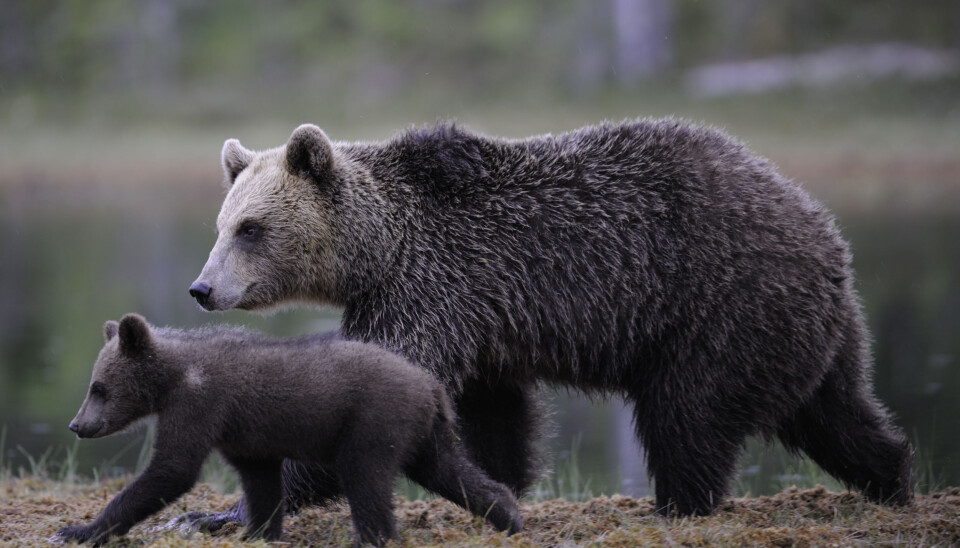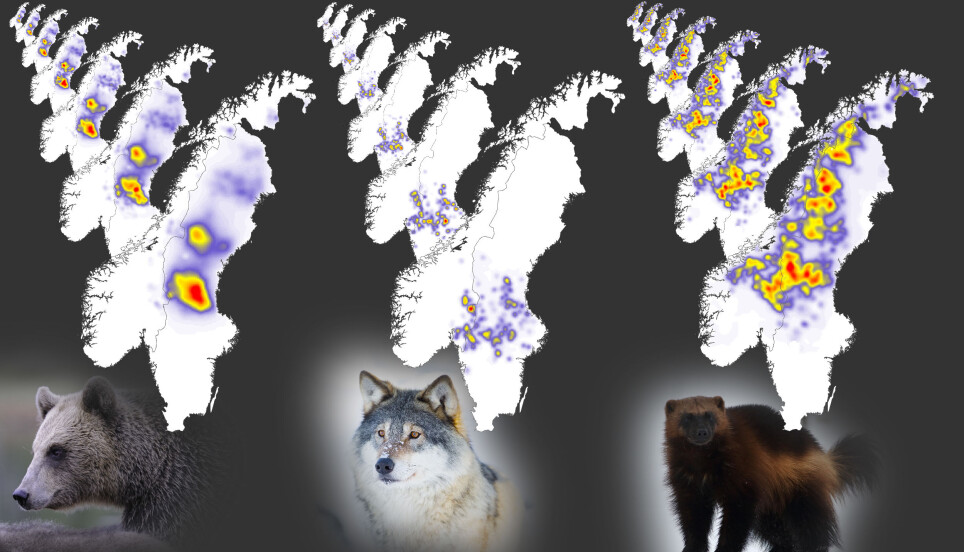This article is produced and financed by the Norwegian University of Life Sciences (NMBU) - read more

Where the wild things are: Scientists map and forecast apex predator populations at unprecedented scale
Findings will help wildlife managers track and predict the dynamics of large carnivore populations.
Researchers at the Norwegian University of Life Sciences (NMBU), together with national and international collaborators, have developed statistical methods that allow mapping and forecasting of wildlife populations across borders.
With this information, researchers can now track the detailed dynamics of entire populations across unprecedented spatial scales, without being limited to small and localized parts of populations.
Population size and distribution
A vital part of wildlife management is knowledge about the population dynamics and distribution of wild species. Large carnivores are one of the most controversial topics in wildlife management. A landscape-level approach to wildlife monitoring, that tracks and forecasts wildlife populations across political jurisdictions, can help humans better manage and coexist with apex predators.
Richard Bischof (NMBU) and colleagues asked if wildlife population dynamics could be monitored and forecast through space and time like the weather, at unprecedented spatial scales that are relevant to conservation and management.
Non-invasive and large-scale monitoring
“The way we tend to study populations is a bit like looking at an elephant through a microscope,” says Bischof.
“We can understand fine details but find it difficult to make out the entire shape.”
Modern survey methods like genetic sampling allow ecologists to monitor wildlife effectively, without having to capture and handle animals. Sources of genetic material left behind by animals, such as feces, urine, and hair, allow identification of species and individuals. Armed with this information, researchers can now track the detailed dynamics of entire populations across large spatial expanses, instead of being limited to a small and localized parts of populations.

From scats to maps
During the past two decades, Swedish and Norwegian authorities, with substantial help from volunteer citizen scientists, have amassed tens of thousands of DNA samples of brown bears, grey wolves, and wolverines across Scandinavia.
Using these data and advanced analytical models, the team lead by Bischof was able, for the first time, to produce detailed maps of the population density of the three species across their range in Scandinavia. These maps give a new perspective on wildlife populations as surfaces that change over time. The results also take into account imperfect detection.
“Wildlife surveys rarely detect every individual.” according to Bischof.
“So, to estimate population size, we cannot simply count the number of animals for which DNA is found. Our models correct for this.”
International team of experts
Researchers at the Norwegian University of Life Sciences collaborated with scientists at other institutions in Norway, Sweden, France, and the United States.
Bischof emphasizes “International collaboration was essential for the success of the project, given that bears, wolves, and wolverines live in transboundary populations in Scandinavia that extend across the Swedish-Norwegian border.”
“The analysis involving thousands of DNA samples across such a huge spatial extent required substantial development in computing. Advances made during the project will now help others facing the challenges of large-scale ecological analysis” concludes Perry de Valpine at the University of California Berkeley, a collaborator and co-author of the study.
Reference:
Bischof et al. 2020. “Estimating and forecasting spatial population dynamics of apex predators using transnational genetic monitoring”. PNAS - Proceedings of the National Academy of Sciences of the United States of America.
———


































